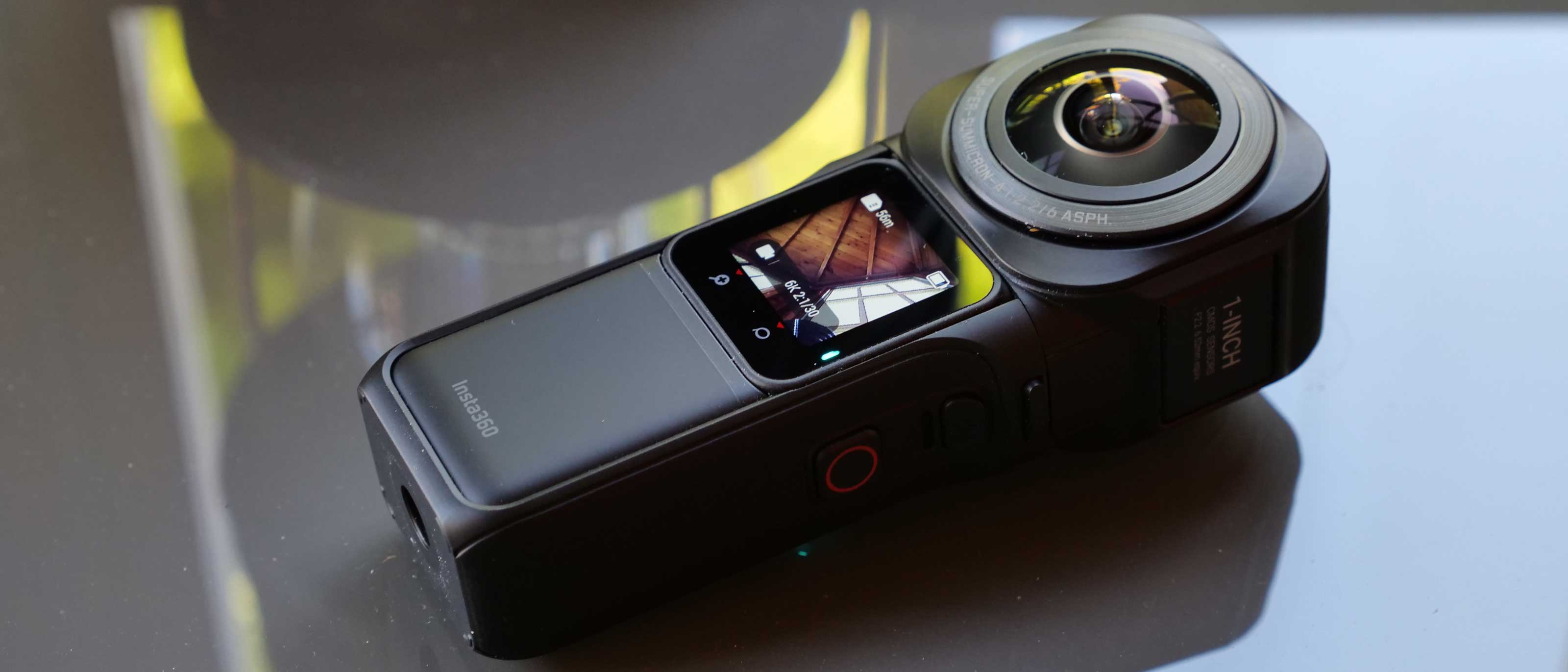Early Verdict
The Insta360 ONE RS 1-inch 360 Edition feels like a ‘grown up’ 360 camera designed for solid image quality and serious filmmaking. You can use it for regular manual 360 stills and video editing, or use the mobile app for clever ShotLab video effects (with instructions on how to shoot them or FlashCut multi-clip movies. There’s a lot to see and try (and learn!). First impressions are of a well-made camera that’s super-easy to use and delivers high-quality results.
Pros
- +
Build quality
- +
Really easy to film with
- +
Image quality
- +
Mobile app’s ShotLab and FlashCut
Cons
- -
Screen a bit small for touch control
- -
Those 1-inch sensors hike the cost
Why you can trust Digital Camera World
The Insta360 ONE RS 1-inch 360 Edition really raises the bar for 360 camera image quality, without pushing straight into expensive, high-end multi-camera hardware used by pros. It’s roughly twice the price of the regular ONE X2, but for the extra low-light capability, dynamic range and all-round clarity, that seems pretty fair.
360 imaging isn’t for everyone, and for first-timers it’s hard to get your head around some of the concepts. For a start, it doesn’t matter where you point the camera – you worry about that later in the editing phase. Don’t worry about stabilization, either – this camera’s 6-gyro FlowState stabilization will take care of that.
A key thing to note, though, is that the 6K video and 21MP stills resolution have to cover the inside of a sphere with the camera at the center. If you save out a regular ‘flat’ video or panoramic photo, you won’t get anything like that resolution – video output is at 1920 x 1080 (for a regular 16:9) crop. But that's still fine for YouTube and most online/social posting, and you do get full control over your framing, panning and subject-following AFTER you've shot your video.
Cameras like these can create really good video and stills for social media and on-screen consumption, but you have to balance their unique capabilities against the higher practical resolution of a regular camera.
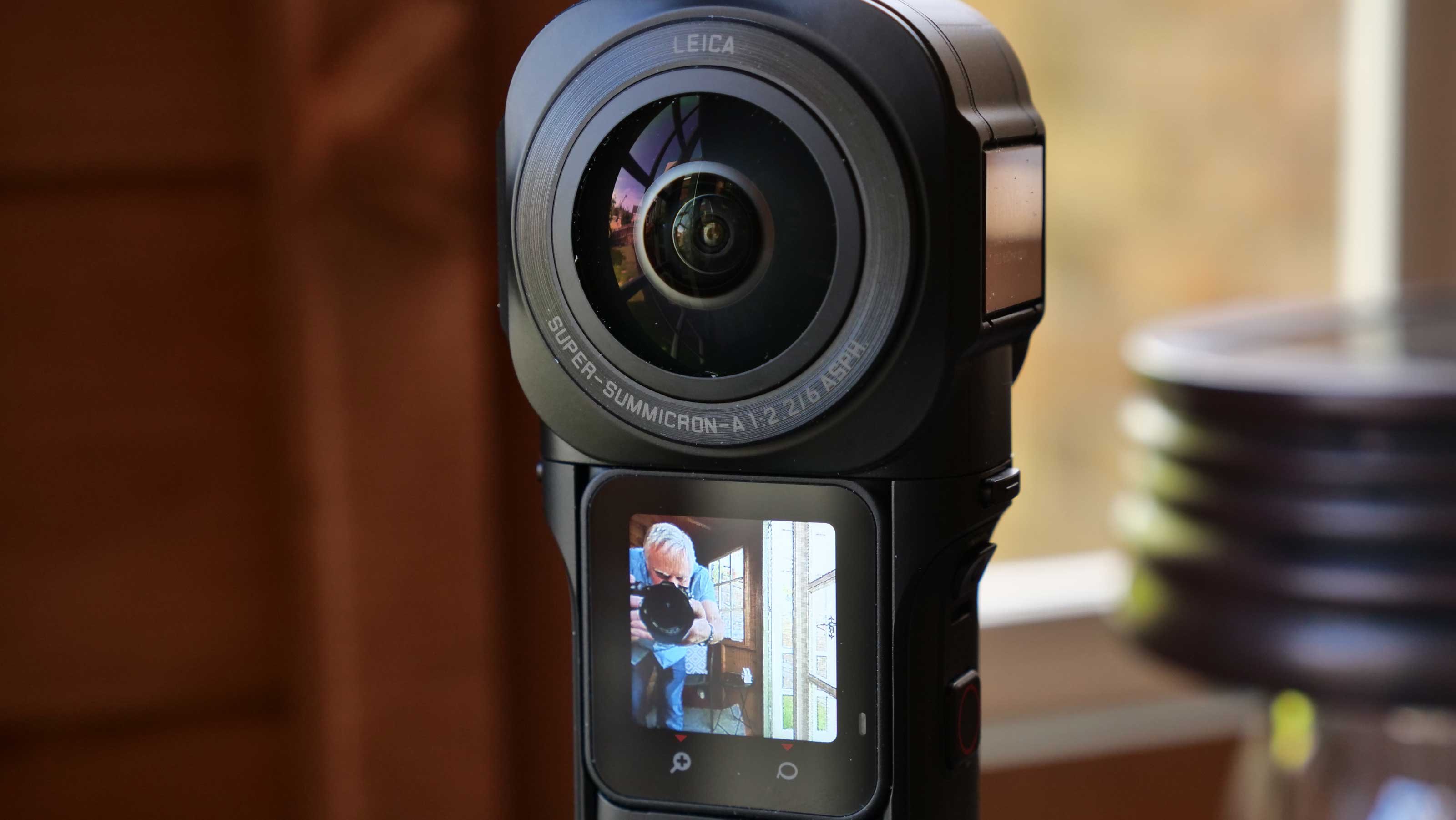
Specifications
Aperture: f/2.2
35mm Equivalent Focal Length: 6.52mm
Photo Resolution: 6528x3264 (2:1 ratio)
Video Resolution: 5888x2944@30fps, 6144x3072@25/24fps, 3840x1920@30/25/24fps, 3040x1520@50fps”
Photo Format: insp, RAW (dng) (RAW files require software on PC/Mac to export.)
Video Format: insv (can be exported via App or Studio)
Photo Modes: Standard, HDR, Interval, Starlapse, Burst, PureShot
Video Modes: Standard Video, Timelapse, TimeShift, Loop Recording
Color Profiles: Standard, Vivid, LOG
Weight: 239g
Dimensions (W x H x D): 53.2x49.5x129.3mm
Run Time: 62 minutes (6K@30fps)
Max Video Bitrate: 120Mbps
Gyroscope: 6-axis Gyroscope
Key features
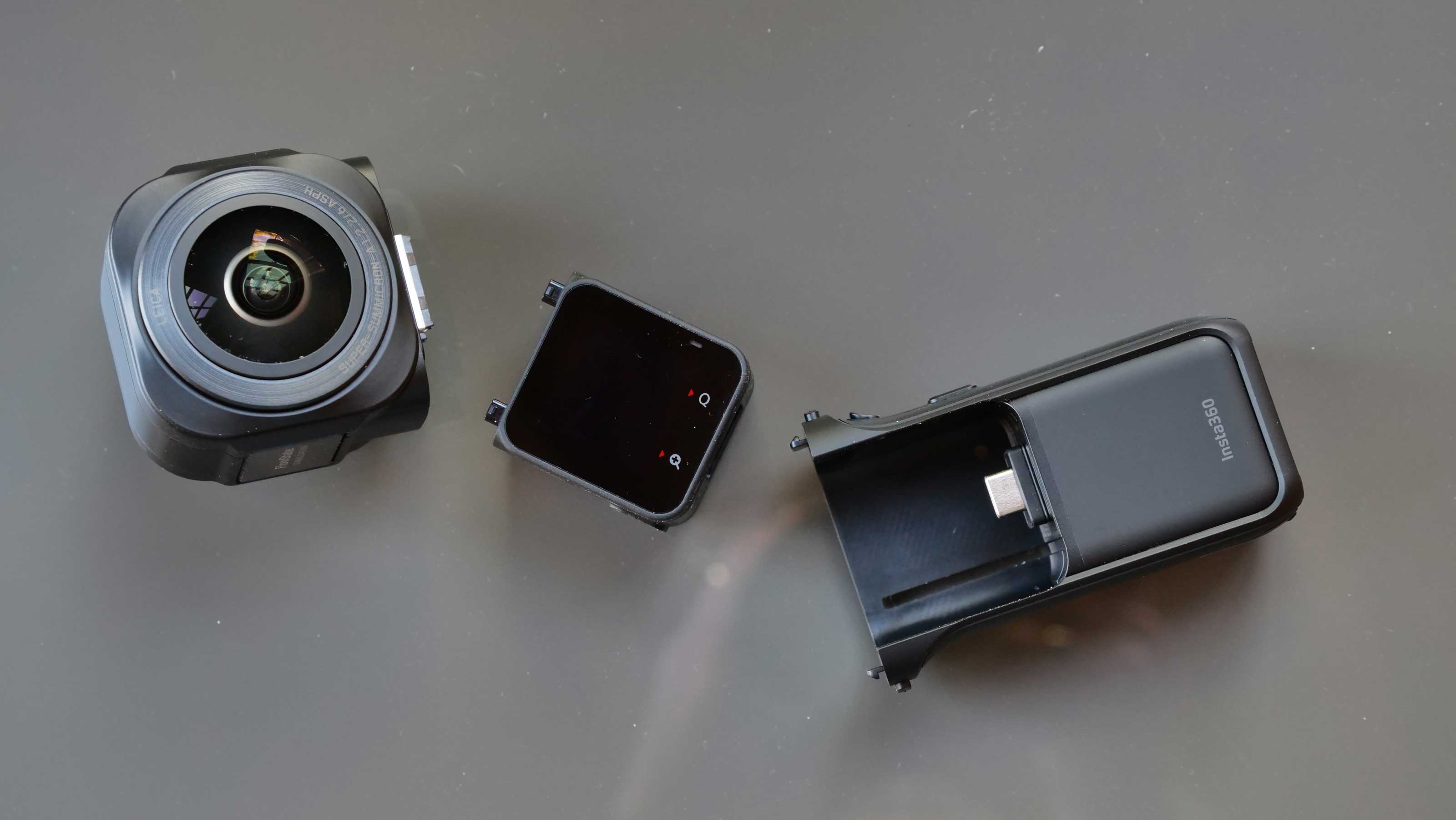
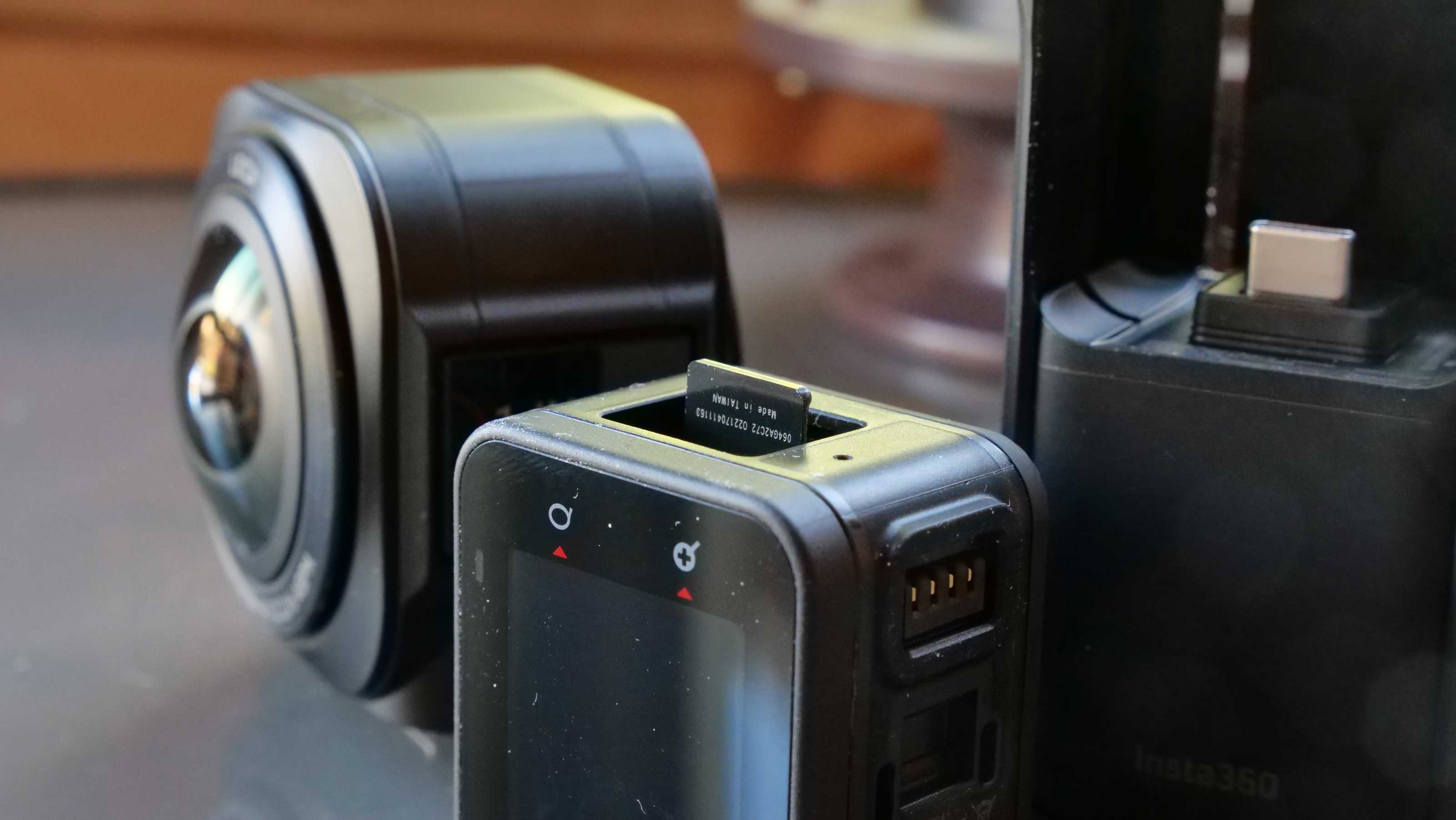
The Insta360 ONE RS 1-inch 360 Edition uses a pair of back-to-back fisheye lenses with a 180-degree angle of view (more actually, to allow for overlap and stitching) that between them produce a fully spherical field of view, stitched seamlessly in-camera in real time.
Most 360 cameras use small sensors a similar size to those in phones, but this one uses much larger 1-inch sensors for a serious step up in image quality.
This puts the it in direct competition with the Ricoh Theta Z1, which also uses a pair of 1-inch sensor cameras. However, the Theta Z1 costs considerably more, captures video at up to 4K 30p (not 6K) and lacks the modular design of the ONE RS 1-inch 360 Edition. It also lacks the multitude of AI editing features in the Insta360 app.
Other key features include the modular design, which allows backwards compatibility with the ONE RS series, should you need it (you will need a special mounting bracket) and which also opens the door for future camera modules.
There are optional clip-on USB-C card reader and mic adapters too. The card reader offers faster file transfers without battery-draining Wi-Fi connections, and the mic adaptor has a 3.5mm external mic socket. The adapter will be ‘invisible’ but it’s hard to see how your mic will – but then there’s also an Invisible Mic Cold Shoe for the RODE Wireless GO and GO II which will give provide an invisible mic setup. It seems like Insta360 has thought of everything.
Build and handling
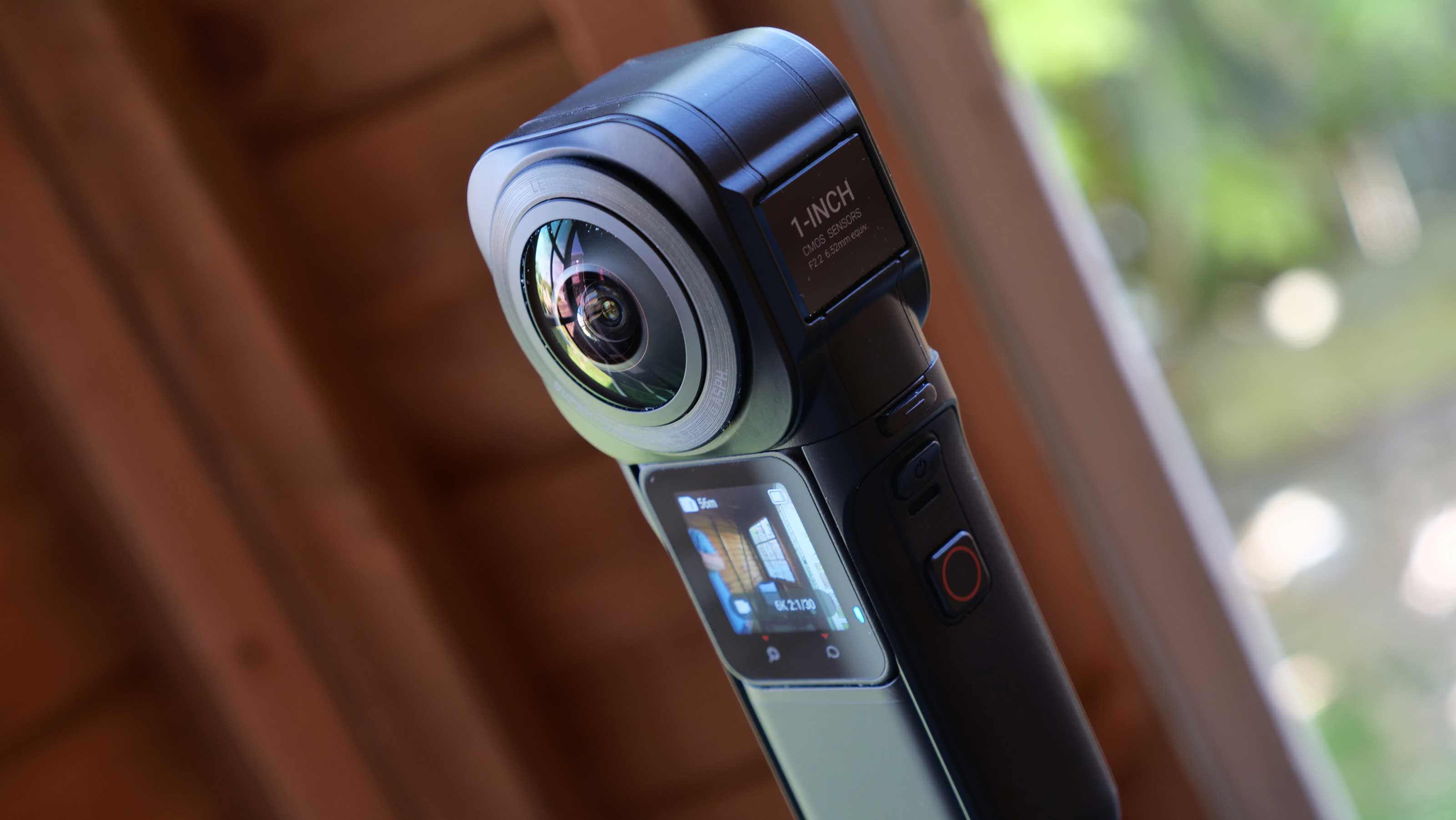
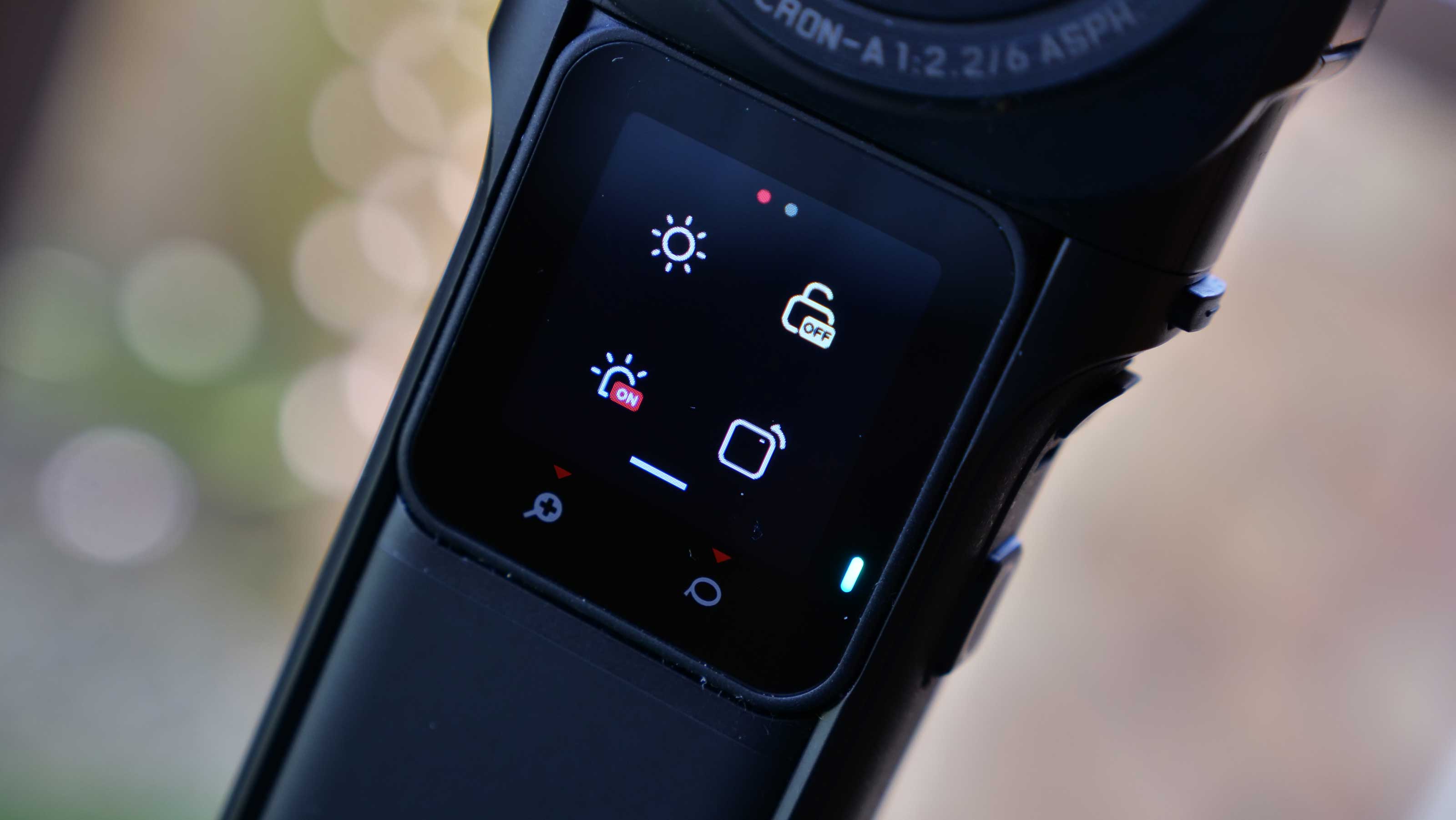
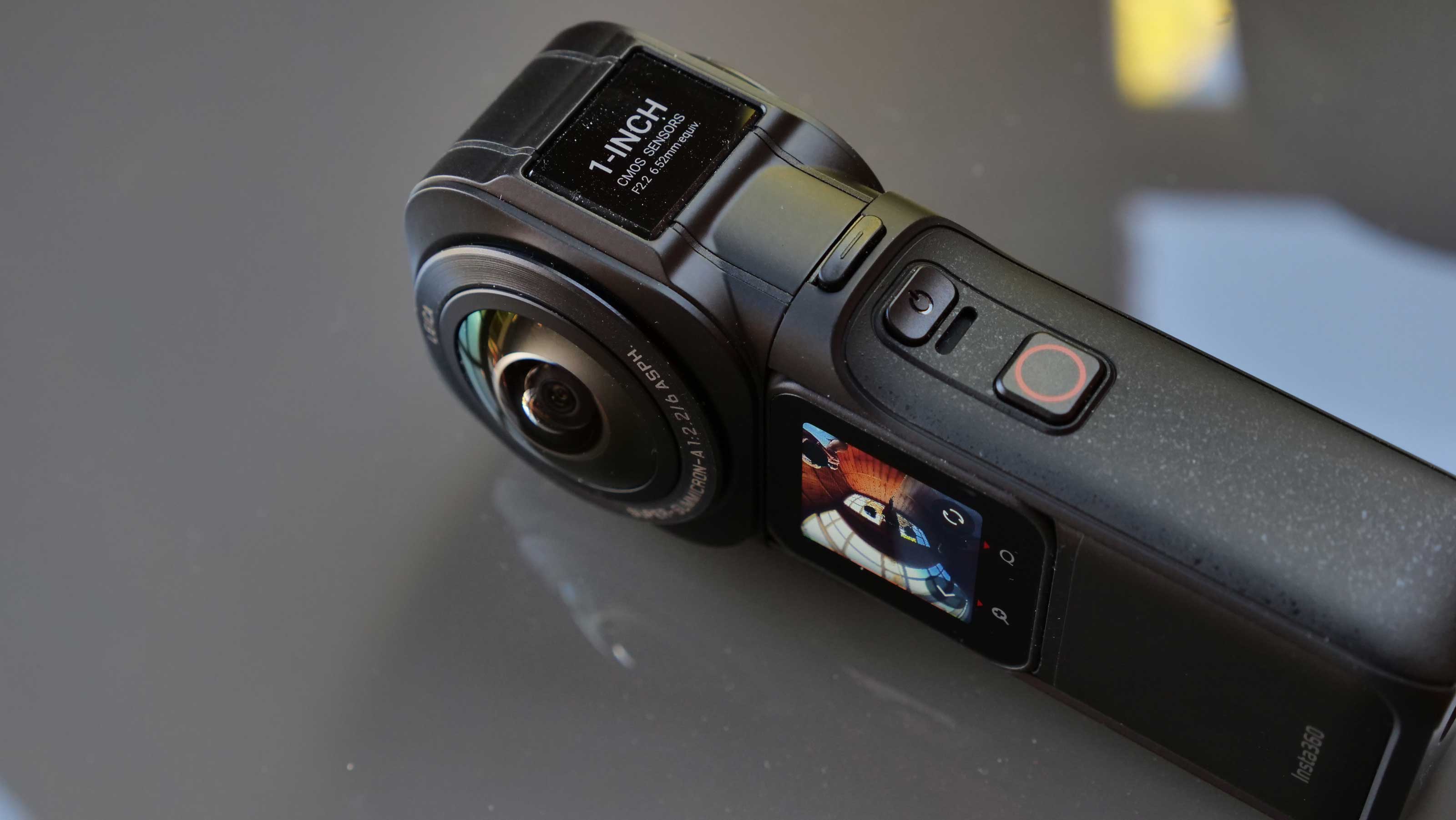
The Insta360 ONE RS 1-inch 360 Edition is IPX3 water-resistant (protection against spraying water when tilted by up to 60 degrees), which helps explain its feeling of solidity. This is a characteristic of insta360 cameras generally.
It’s a bigger, fatter camera than the ONE X2, but still easy to slip into a jacket pocket and perfect for hand-held use – though you will see your fist in the bottom of the frame. The alternative is to use the ‘invisible’ selfie stick. The further you extend this, the smaller the hand you’re holding it with will appear in your video.
Even the selfie stick feels well made. It screws directly into the base of the camera and the extending sections feel firm – but there’s no play or wobble at all. There’s no articulating head where the camera attaches because you don’t need one – remember, with a 360 camera it doesn’t matter how you tilt it.
The small square touchscreen on the back is hardly needed for framing, but it is useful in playback mode for scrolling around your 360 captures. It’s also a touchscreen control interface for the camera, though the screen is so small that the icons are inevitably small too, so it’s not so easy to use if you’ve got big, blunt fingers.
You can adjust all the camera settings via the app, and you might find this more convenient. This is where so many of Insta360’s clever editing features are found too – but be aware that you have to do some of work. The FlashCut movies, for example, need 4 or more clips to work from (or more than that), while many of the ShotLab effects need footage that’s been shot in a specific way.
Performance
Here's a quick sequence shot with the Insta360 ONE RS 1-inch 360 Edition. It doesn't show everything this camera can do but it does show its potential for POV changes and post-shoot framing. This was all done in minutes in the app then assembled with titles in iMovie.
We haven’t spent long enough with the Insta360 ONE RS 1-inch 360 Edition yet to form a final judgement on its performance. Despite the claims about dynamic range, it initially looks as prone to highlight blow-out in bright scenes as its rivals, and while the inbuilt mics are sensitive and effective, they do pick up wind noise – for the best audio, you might need the mic adapter options so that you can use one with a wind shield.
However, in our initial tests, the stabilization looks excellent, the HDR photo mode is really effective in high-contrast scenes (though it can bump up the saturation a little high), and the app is very good indeed at following human subjects automatically.
In fact the app is a big part of this camera’s appeal. Even if you don’t want to get caught up in the preset video effects (the presentation of these can get a little confused and frenetic), you can simply swipe through your 360 video’s timeline and control the framing with keyframes – just rotate/twist the view, add a keyframe and the app will create smooth pan from the last keyframe view to the new one.
Just be aware that some effects are quite complex to render. It would take a desktop video editor a while to chew over the more advanced ones (if it could do them at all), so you can hardly blame the app for taking a minute or so.
The only glitch we’ve seen so far is some poor stitching of objects very close to the camera, but our sample was running beta firmware and this is a relatively uncommon shooting situation too (very near objects, right on the ‘join’).
Early verdict
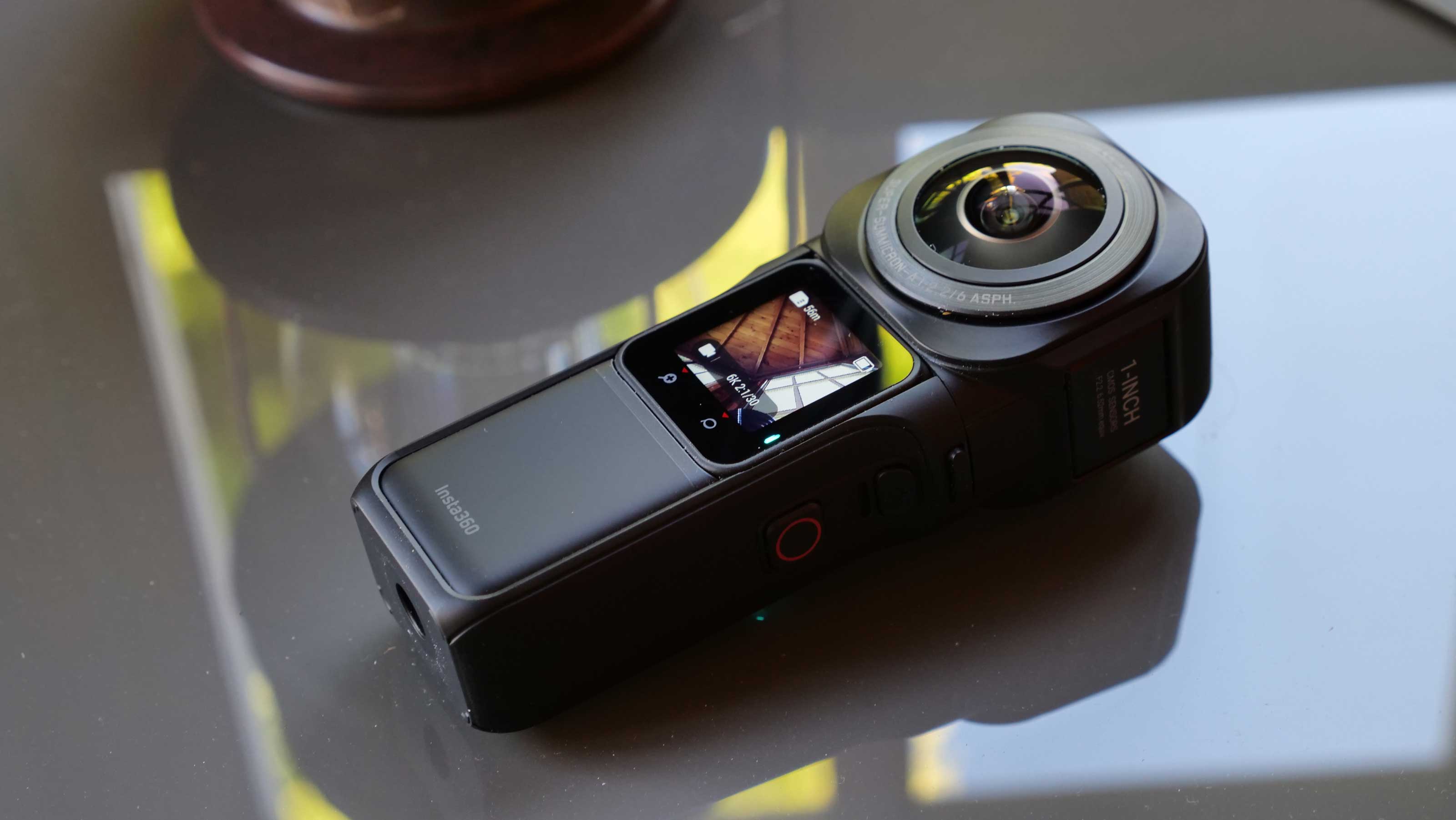
If you just want to try out 360 imaging, the ONE RS 1-inch 360 Edition is probably overkill. The Insta360 One X2 is two-thirds the price, smaller and lighter, and can do pretty much everything the ONE RS can do. Alternatively, you can get the Insta360 ONE RS Twin Edition for less than the price of this camera, and that comes with both a 360 module and a regular action cam module.
But if you’ve tried these and you want a step up in quality from the small sensors used in those 360 cameras, this Insta360 ONE RS 360 1-inch edition doesn’t look so expensive. It’s certainly cheaper than its rival, the Ricoh Theta Z1, and it does a lot more into the bargain.
Read more:
• Best 360 cameras
• Best action cameras
• Best cameras for video

Rod is an independent photography journalist and editor, and a long-standing Digital Camera World contributor, having previously worked as DCW's Group Reviews editor. Before that he has been technique editor on N-Photo, Head of Testing for the photography division and Camera Channel editor on TechRadar, as well as contributing to many other publications. He has been writing about photography technique, photo editing and digital cameras since they first appeared, and before that began his career writing about film photography. He has used and reviewed practically every interchangeable lens camera launched in the past 20 years, from entry-level DSLRs to medium format cameras, together with lenses, tripods, gimbals, light meters, camera bags and more. Rod has his own camera gear blog at fotovolo.com but also writes about photo-editing applications and techniques at lifeafterphotoshop.com
